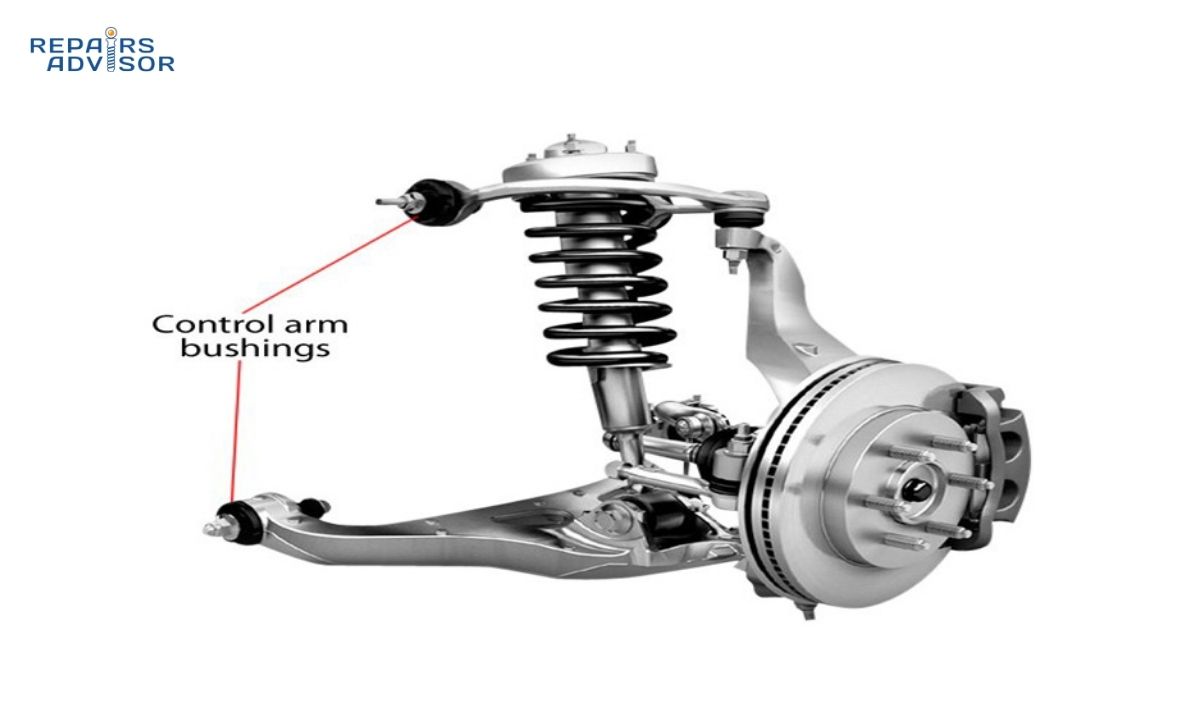Ever wonder how your wheels move up and down smoothly as you drive, effortlessly absorbing bumps and potholes? That smooth motion isn’t just thanks to your springs and struts; it’s also heavily reliant on your control arms and, more specifically, their often-overlooked components: the control arm bushings.
Control arm bushings are small but incredibly important parts. They act as the flexible connection points between your control arms and your car’s frame. Typically, they consist of a metal sleeve surrounded by cushioning material like rubber or polyurethane. A large bolt then passes through the center, securing the control arm.
Their main job? To allow the control arm to pivot without excessive friction, and crucially, to dampen vibrations and reduce noise transmitted from the road into your cabin. Each control arm usually has two bushings where it mounts to the frame, and you’ll find them in most front suspensions and many rear suspensions.
However, like any component constantly under stress, control arm bushings wear out over time. When they fail, your car’s ride quality, handling, and even safety can take a significant hit.

How to Spot the Warning Signs of a Bad Control Arm Bushing
When one or more control arm bushings start to go bad, your car will definitely try to tell you. Here are the most common symptoms to watch out for:
- Noise (Knocking, Thumping, Squeaking):
- This is often the first and most irritating sign. You might hear a distinct knocking, thumping, or even squeaking noise, especially when:
- Driving over bumps, potholes, or uneven road surfaces.
- Accelerating or braking (the suspension shifts, putting stress on the worn bushing).
- This happens because a worn bushing can no longer hold the control arm firmly in place. Instead, the loose arm “bangs” around, causing those unpleasant sounds.
- This is often the first and most irritating sign. You might hear a distinct knocking, thumping, or even squeaking noise, especially when:
- Uneven Tire Wear:
- Worn control arm bushings allow the control arm to shift out of its intended position. This directly impacts your wheel’s alignment angles, leading to abnormal and accelerated wear patterns on your tires. You might notice excessive wear on one side of the tire tread (inner or outer edge) or a choppy, feathered appearance. This is a clear indicator that your suspension geometry is compromised.
- Steering Problems (Vague, Wandering, Pulling):
- A failing control arm bushing significantly affects your vehicle’s alignment and steering precision. You might experience:
- Vague or “loose” steering, where the car feels less responsive, and you have to make constant small corrections to keep it going straight.
- The car pulling to one side, requiring you to hold the steering wheel off-center to maintain a straight path.
- A general feeling of instability in the steering, especially at higher speeds or on rough roads.
- This occurs because the worn bushing allows the control arm to move excessively, disrupting the precise angles needed for proper steering.
- A failing control arm bushing significantly affects your vehicle’s alignment and steering precision. You might experience:

How to Deal with Failing Control Arm Bushings: Expert Advice
When control arm bushings go bad, they need to be replaced. This isn’t usually a simple DIY job due to the tools and precision involved.
- Replacement Options (Bushing vs. Whole Arm):
- In some cases, if the control arm itself is still in good condition, a mechanic can use specialized tools (like a shop press) to separate the old bushings from the arm and press in new ones.
- However, if removing and replacing just the bushings is too labor-intensive, or if the control arm itself shows signs of wear or damage, your mechanic might suggest replacing the entire control arm assembly (which comes with new bushings already installed) as a more cost-effective and reliable solution.
- Professional Installation is Key:
- This job typically involves lifting the car and requires careful, precise placement of the new parts.
- Crucially, some manufacturers insist that the control arm bushing fasteners be tightened only when the vehicle is at its normal ride height (i.e., with the full weight of the car on its wheels, not while lifted). This prevents the new rubber bushings from being twisted and pre-loaded incorrectly, which would drastically shorten their lifespan. Your mechanic will always follow the manufacturer’s repair information to ensure correct installation.
- Replace as a Set (When Possible):
- It’s highly recommended to replace control arm bushings as a set, especially on vehicles that see heavy use. If one bushing is worn, its counterpart on the same arm or the opposite side of the vehicle is likely to be similarly worn and will likely fail soon. Replacing them together ensures balanced performance and saves you future trips to the shop.
- Wheel Alignment is a Must:
- After replacing control arm bushings (or the entire control arm), a wheel alignment must be performed. Changing these components directly alters your wheel’s angles, and an alignment is essential to restore proper steering, prevent uneven tire wear, and ensure your vehicle handles safely.
Your Repair Advisor’s Take:
Control arm bushings might be small, but they play a monumental role in your car’s ride comfort, steering precision, and overall safety. Ignoring the signs of failure like those annoying noises, uneven tire wear, or wandering steering can lead to more significant issues, including accelerated wear on other suspension components and compromised vehicle control.
Don’t let bad bushings impact your driving experience or safety! This is not a repair to put off.
For accurate diagnosis, proper installation, and a lasting fix, always consult a qualified automotive mechanic. They have the specialized tools, knowledge, and experience to correctly identify the issue and ensure your new bushings are installed perfectly. Get your smooth ride and confident steering back – schedule a suspension inspection today!
